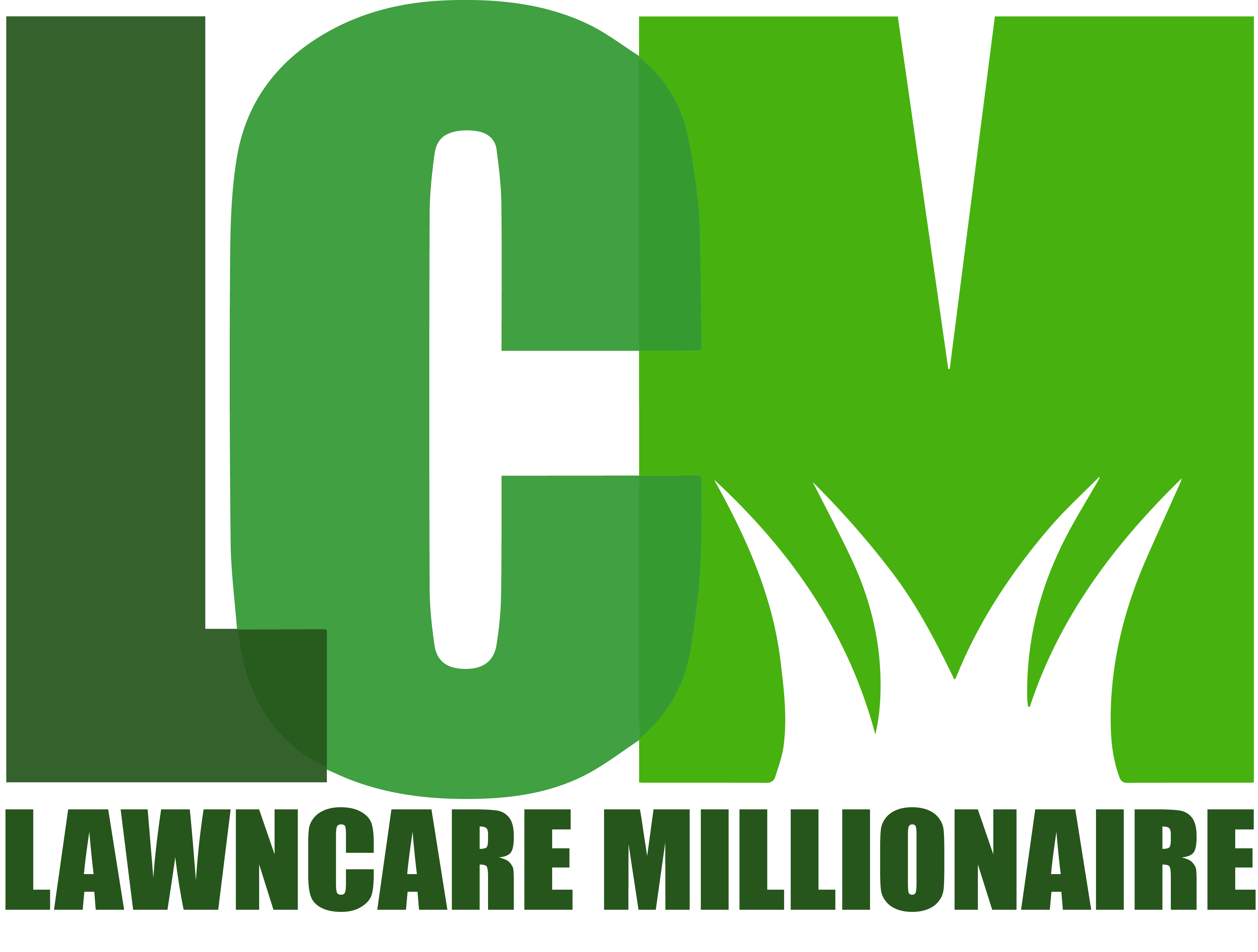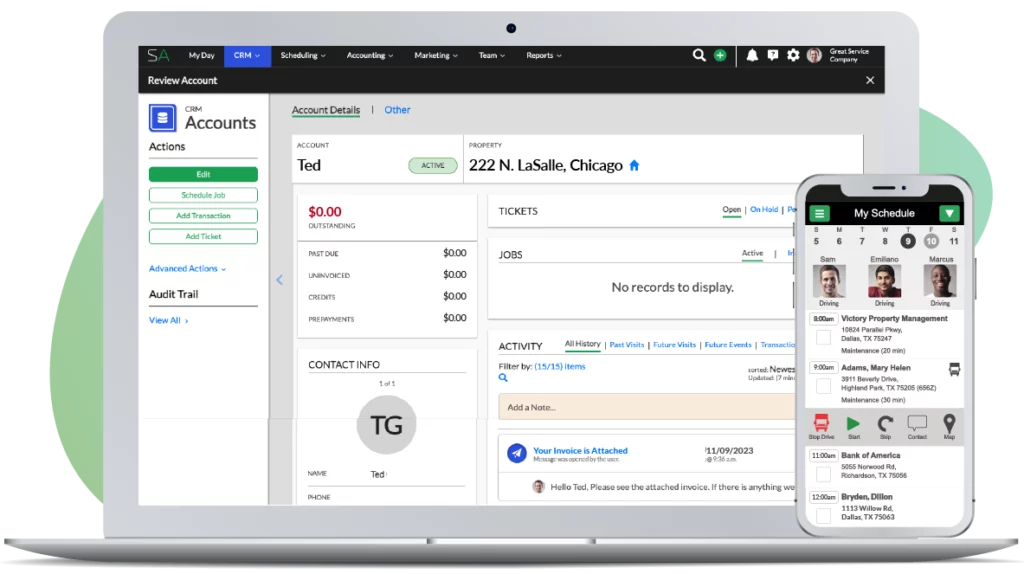Learn why your lawn care business profits will shrink as your company grows…
The culprit of declining profits is almost always one of two things:
1) increased overhead you didn’t expect and therefore budget for or
2) incorrect pricing of the work you sold (often because you are unaware how much overhead cost you will incur to perform the work, especially as the business grows)
The good news is your lawn care profits (profit margin of your business) do not have to decline. You can protect your margins by understanding overhead and how overhead will change as you grow your company. With this understanding in mind you will be able to price work correctly to maintain your desired profit margins.
Watch this video to learn how to avoid the trap of declining profit margins.
Video Transcript
Hey, it’s Jonathan. I get this question, but it’s never specifically asked the way I’m about to say it. It’s just asked in all kinds of different variations. Basically the question is, “Why is it that as my company keeps growing I’m becoming less profitable”, or “Why is it as my company keeps growing I have less and less money”. Let me give you some numbers first and set this up and then let’s talk about it.
There’s a lot of reasons why this might be. The one I’m going to point out, in this video I’m going to talk about is specific to overhead. Let me give you an example first just to build up a scenario and then let me talk through this. Don’t get caught up in my numbers. Don’t get caught up in the numbers being perfect. Don’t get caught in the math, it’s just for the sake of an example.
Let’s say that you make $10. We could even say $10 a year. However you want to think about this, you make $10 a week. Let’s use you bring in $10 in revenue. You start out in your company, you’re out there doing the work, you’re spraying the lawns, you’re mowing, you’re doing whatever, you make $10 today. Let’s use a daily rate. I made $10 today.
If I’m spraying lawns I had $2 in material cost, I had some gas in my truck, I had a few costs and I had $2. At the end of the day I have $8 left over. I made $8 today. That’s 80% on my $10. In gross revenue I made 80%. Good day, I made $8. Obviously it’s not a good day, but just for the sake of math.
You start growing the company a little bit more and you start selling a lot more accounts and now you need some help. You still make $10 a day, but now you need somebody else to go do the work for you. You’re not on the truck, you’re sending somebody else out to do this work for you. You have $10 in revenue for the day, you have that same $2 in cost as when you were doing the work, but now you have $5 in cost to send somebody out to do that job for you. Now you have $3 left over. That’s 30%, 30% is awesome, that’s a great margin, again oversimplification here.
Then you start going a little bit more. You get more accounts, you get a few more employees, you keep adding to it, and then you have to go get an office. Then maybe you have to hire a salesperson and then you’ve got to hire an office manager to work the phones. You’ve got to get an accountant, you’ve got to buy some computers, you’ve got to do a million different things called overhead.
Now that same analogy. You make $10 bucks for the day, you have $2 in cost, you have $5 in employee costs, but now this overhead. The people answering the phone, the cost of the office, all this other stuff, a truck for you the manager. Once you divide that out you figure out that it costs me, with all this overhead that doesn’t produce revenue. Overhead is what it takes to run and make the business function and operate. It’s not producing revenue in my example here.
Once you figure it out it costs me about $1.50 a day in overhead. Now take that $1.50 out. So $10 you made today, minus $2 for costs, minus $5 for employees, minus $1.50 in overhead, we’ve got 50 cents leftover, that’s 5%. You can quickly see how in a business if you price… For example when you first get in business and you go out and you price a lawn and say I can make a lot of money. I’m mowing the lawn, if I do 10 of these lawns a day or if I spray 10 of these properties a day based on what I’m charging, I’m going to make a nice living. It’s definitely better than the living I used to make when I worked for somebody.
Then the business, because you’re pricing your work really well, very competitively and you’re doing a great job because you’re the guy, you’re the owner, you’re all invested, you’ll do whatever it takes, business starts growing. Then you have to start having other people do the work for you and they don’t work quite as fast as you work and there’s all these other factors.
Now you need to build some infrastructure in your business to support them, again called overhead, then you start adding all of these costs, but yet you’re still pricing exactly the same way when it was just you and you had virtually no costs. You can’t, with that old pricing model, absorb all of the costs in your business that has now been created to run this bigger business.
I think of True Green as being a highly inefficient business. I don’t know, I’ve never worked at True Green. I could be crazy, maybe they’re not. I view them as being a highly inefficient company. Why does True Green have to charge more money than most other companies and even companies that are a good size? It’s all because of the layers of overhead. It’s the offices, it’s the management, it’s the layers of management, it’s all the overhead.
They’ve also become a real organization. They have laws to comply with. They have legal concerns. They have all kinds of business risk that they’re trying to mitigate and eliminate and they have to put more people in place. They have to cover their butt. They’ve got to do more paperwork. Now they have to hire more people to do that paperwork. They have to make sure that they’re doing their safety meetings because they don’t want to get sued. They’ve got to make sure that they’re taking every precaution with their chemicals.
This stuff just keeps adding up and adding up and adding up. Also as you get further down the food chain from the owner, who was all in on this company, this is his baby, you bring in other people that are a little less passionate, work a little less hard, aren’t going to do 70 hours a week because this ain’t their thing. They’ll work hard and they want your company to do well, but at the end of the day they’re not going to do what you were willing to do. Why should they? They don’t make or have the potential to make the kind of money you have. You get a little less efficiency from all of those people and that costs your company money.
You can see how all of these little things add up. The point I want to go back to, and all of that’s overhead, the reason that a lot of businesses get themselves in trouble is when they started they priced their business one way. Yeah, they took a little bit of a price increase here or there, or maybe they only took a price increase on new clients. You cannot generally follow your pricing levels from when you started your business or even a couple of years into the business. Those levels have to evolve, they have to change and they have to go up.
There’s a reason that bigger companies price higher, they have to because they have all kinds of overhead to run a company of that size. If you want to build a real company some day with a management team, maybe even a president that runs the company for you, you better price in a lot of overhead because it takes a lot of people to do that, to build that kind of a company. You can’t operate off of yesterday’s pricing models.
This is one of the dangers of a lot of guys that get into business is they don’t understand up front all of the costs that are coming down the road. There’s no way you could. If you read and think about it, yeah you can project a few, but you’ll never fully be able to project all future expenses. Given that, you want to, when you start your business, don’t underprice the market. Do not. Price, if at all possible, from day one just like you have all the overhead. That will leave you more margin in profit to grow the company faster and reinvest.
Price like the market, at least at average market price, from day one in my opinion. That way you have the money there and your contracts and work that you’ve already sold is priced correctly to allow you to grow. What happens is a lot of guys start and they have all of these customers and they made a bunch money and as the company grows they become disenfranchised with their original clients because they don’t make enough money on them. Then they start to neglect them, that hurts your reputation. You don’t want to do that. You don’t want to play that game so price it right.
Later you only have two choices, you fire that client or you raise their prices. At some point you’ve got to get your prices right or you’ll never have profits in your business and you’ll wonder, “Why is my business not doing very good. Oh, it’s all the low ballers, oh it’s this, it’s that.” No, it’s just that oftentimes you didn’t know better. I didn’t know better. We didn’t know better. When we started our companies we didn’t know exactly how to price and we didn’t price in all the overhead that was coming down the road to grow a real, sustainable, great business.
As your business grows you’ve got to consistently re-price work, sell it at the right prices. You’ve got to pay attention to that. Then you might have to go back to old clients and raise the price. That’s the only way around it. If you don’t you’ll slowly put yourself out of business. It’s an invisible thing that’s happening. As the business gets big it’s really hard to figure out where the leaks and the problems and the holes are where the underpricing is at.
This thing creeps up on you and it’s something to be very aware of. This is how you end up with a low margin, low performing business, that you’d like to sell or get out of at some point because it’s not producing what you thought you could produce or what you experienced when you first started the business and then chose to grow it bigger because you thought, “Oh this is going to be great. I’m going to make a ton of money.”
That’s how you look at it. If you’re aware of that you can solve this problem or you can prevent this problem altogether as you grow. Good luck.



